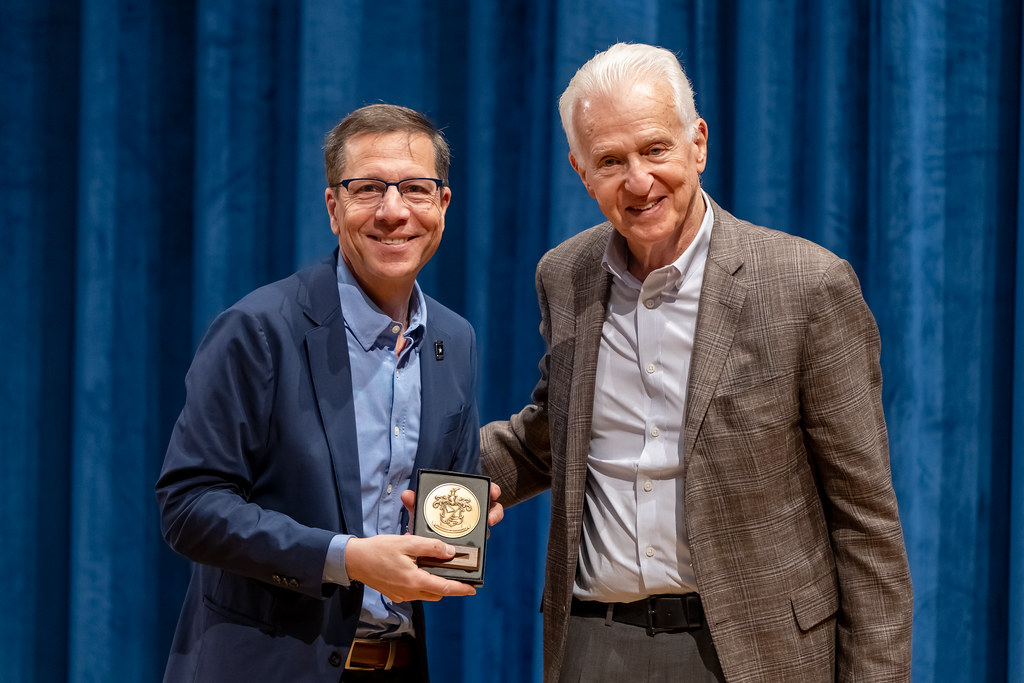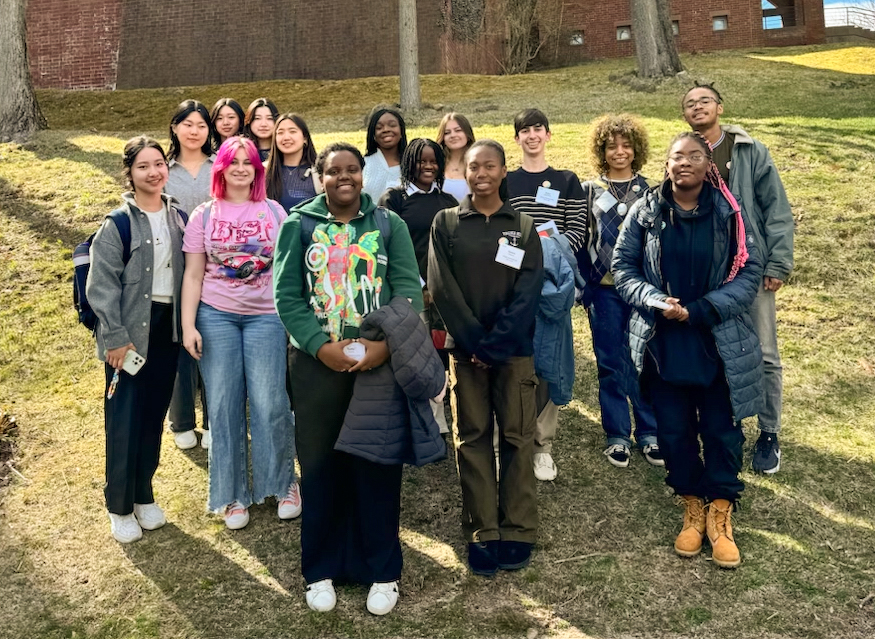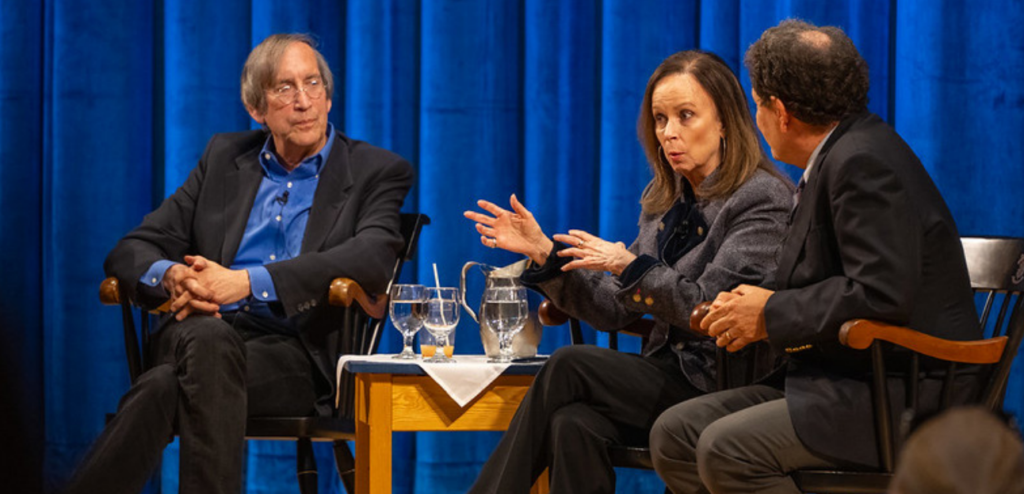In January 2005, then-President of Harvard University Larry Summers spoke at a conference about diversifying the Science, Technology, Engineering, and Math (STEM) workforce. Addressing the lack of women in these fields, he said, “There are issues of intrinsic aptitude, reinforced by what are, in fact, lesser factors involving socialization and continuing discrimination.” Summers’s insinuation that women are “intrinsically” inept at math and science drew rebuke from the majority of the audience, a clear indication of people’s broadening perspective towards a historically underrepresented group in STEM.
While society has made significant strides towards equity in STEM workplaces since 2005, the lack of female representation remains unresolved. According to the U.S. Bureau of Labor Statistics last year, women make up nearly 50 percent of the U.S. workforce, but only 35 percent of scientists and 15 percent of engineers on average. Since 1991, the percentage of women in computer science has actually decreased.
A closer look into Choate Rosemary Hall illuminates issues that may deter women from pursuing STEM and steps the school’s administration has taken to overcome them. Such measures have aimed to increase female students’ interest in science and math courses, but are they working?
An analysis of Choate’s annual departmental prizes, awarded to students who have excelled in a certain subject, reveals disparities in gender. In the past 28 years, female students have won only 37 percent of math awards and 35 percent of science awards. The gender imbalance is even more pronounced in computer science courses: girls received less than 10 percent of these prizes since 1990.
Certain disciplines are also unevenly split between students of different genders. “Our top- level physics classes have traditionally been some two-thirds to three-fourths boys, whereas our upper-level biology classes tend to skew towards girls,” observed Mr. Ben Small, head of Choate’s science department. But why are there such notable differences?
“There is absolutely an issue of participation,” explained Dr. Matthew Bardoe, Head of the Math and Computer Science department at Choate. “That’s been something that we’ve been looking at over the past several years and talking about ways to ameliorate.”

There is a lack of representation and recognition for women in STEM both around the world and at Choate
Indeed, enrollment records in non-required math and science electives reflect the inequality in Prize Day awards. In the past five years, boys have represented more than 60 percent of students in the average math class and 55 percent of students in the average science class. Computer science and robotics are particularly male-dominated fields. This academic year, female students make up only a third of those enrolled in programming-related classes, with past years faring similarly.
Another prominent club on campus, Choate’s Robotics Team, is also predominantly male. This year, less than 40 percent of participating students are girls. However, when the club began in 2013, there was only one girl on a team of seven. Likewise, when Elise Hummel ’18 joined robotics in its second year, there was only one other girl. Hummel said, “As a freshman with no robotics experience, I definitely felt intimidated on the team at first. I had a ton of questions, but as one of the only girls, I didn’t want to ask them. Admitting that I didn’t know the basics of how to build a robot would reflect badly on a girl’s potential for STEM-related activities. Luckily, my teammates at the time were extremely supportive, and I was able to learn quickly.”
Now in her senior year, Hummel is one of the two female co-captains. Though the team is still not divided evenly gender-wise, it’s significantly better than it was in its earlier years. Hummel said, “Generally, I think the team has grown to the point where girls aren’t as apprehensive in joining, where they aren’t afraid to ask questions or make suggestions to their male teammates. Honestly, that’s more important to me than winning championships.”
Rebekah Agwunobi ’19, who has taken college-level computer science classes since her freshman year, shared many of Hummel’s sentiments. “I was the only girl and freshman in my Application Development class, and it was an unbelievably intimidating and difficult environment to succeed in,” she said. “It made me question my passion for and ability in computer science several times throughout the term.”
Notably, two of Choate’s science signature programs have maintained nearly equal numbers of male and female students. These are programs to which students must be accepted, however, and faculty members may be artificially evening the numbers.
First is Choate’s Science Research Program (SRP), which offers a select group of students the opportunity to conduct research at university laboratories. In the past three years, boys have comprised nearly 55 percent of students in the Quantitative section, while girls made up the same percentage in the Biology section. Likewise, applicants to the program are nearly equal in terms of gender. For the class of 2019, 55 percent of interested students were girls.
Students in the Environmental Immersion Program (EIP) at the Kohler Environmental Center (KEC) are usually split evenly between genders; however, there has been a recent skew toward women. Since the program’s inception in 2013, just over 50 percent of participants have been girls. The past two years, however, have been particularly female-dominated, with only a third of EIP students being male. The first-floor dormitory — originally intended for only boys — was even partitioned into two this year, so the program could accommodate more girls.
Gaby Garcia ’19, a current student in the EIP, offered her opinion on why more girls than boys at Choate have lately pursued environmental science. “Girls have been taught to be more emotional, so they’ve developed a connection to the environment because of aesthetic appeal,” she said. “Meanwhile, boys haven’t necessarily been taught that through the masculine perspective.”
While being emotionally aware of the environment may be associated with girls, excellence in math and natural sciences has historically been a male trait. A quick look at the professional STEM world reveals such a trend: of the 328 Nobel Prizes in Physics, Chemistry, and Medicine awarded since 1901, only 18 of the recipients were women. Nobel Committees have done little to recognize more outstanding female contributions in science; this year’s Nobel Laureates in those same fields were all men.
While multiple studies have disproved this concept of male superiority across various contexts, these stereotypes appear to be still ingrained in today’s society. The general consensus among students and teachers at Choate is that sexism, if it exists on campus, is implicit. Rather than people being outwardly sexist, their biases are subtle, shaped by remnants of a societal stigma that dictates men to be more fit for STEM fields.
“We live in a world that goes far beyond Choate, and this isn’t necessarily an issue of sexism at Choate,” said Dr. Bardoe. “It’s definitely an issue of sexism in the world, and this is a way Choate, at times, reflects the world in which we are in.”
Over the years, as society has arguably become more supportive of women in STEM, the gender inequality in Choate’s Prize Day awards has decreased. From 1990 to 2000, female students earned only 26 percent of prizes related to math or science, significantly lower than the average of 35 percent across the past 28 years. Since 2000, however, that number has remained relatively stable at 37 percent, indicating minimal progress in almost two decades. Ms. Irma LiVigni, a data analyst at Choate’s Registrar’s Office, also noted the narrowing gap between genders in enrollment in math and science electives.
Ms. Yuxin Xie, a Chemistry and Biology teacher, said, “I don’t think this is what any of the teachers are pushing forward, or that this is what Choate wants. It is occurring as a result of the culture that we are living in as a whole. However, if we do not directly address it, we’re just letting the problem continue.”
While there is no doubt that Choate has progressed over the years, female students nonetheless continue to be underrepresented in various STEM fields — perhaps due to lingering social stigma. Different cultural impressions of women in STEM may also impact Choate students, who hail from over 40 countries.
At school, internal bias toward male students may manifest through the Pygmalion effect, or self-fulfilling prophecy. In this phenomenon, first discovered in a study conducted by psychologist Robert Rosenthal and educator Lenore Jacobson in 1968, higher expectations unconsciously lead to an increase in performance. In the case of education, teachers who were raised to implicitly believe that men are dominant in STEM may project this belief in their teaching, leading boys to more success and perpetuating the narrative that they are better suited for such fields.
Of course, this is only a possible explanation for the gender disparities at Choate. Several teachers have, in fact, undertaken measures to prevent themselves from being biased.
“As a teacher, I try to treat every student equitably so that they each have the same opportunities,” said Mr. Small. “I’ve even directed some of my classes, particularly my physics classes, towards girls to make sure that they participate and don’t feel like it’s a male-orientated class.” Some teachers make note of each person they call on to make sure the gender ratio is even, while others use random number generators to decide which student to call on. When grading students, Mr. Small evaluates assessments without first looking at the student’s name.
Faculty at Choate have also taken steps to promote certain courses even before students enter the classroom. Both Mr. Small and Dr. Bardoe cited hiring similar numbers of male and female teachers as an attempt to combat gender imbalance. “It was very important of us to hire a computer science teacher somewhere who would be a woman. It’s important to hire math teachers who can teach upper level courses who are women,” Dr. Bardoe said. “And we did that.” Currently, Choate’s gender ratios for math and science teachers are 43 percent and 52 percent women, respectively.
Ms. Xie has been working closely with Mr. Small to help create a more inclusive environment for female students in the sciences. The department has been discussing issues that arise when trying to support girls in STEM, and how girls might not even be getting enough support. They’re also reviewing the curriculum, examining which scientists are discussed and trying to incorporate more female scientists.
Mr. Small added, “I hope that teachers and advisers will actively promote those courses for younger students,” he said. “I’m afraid that there might be a gender bias there – an instinct to say to a girl, ‘drop down to regular,’ and to a boy, ‘you’re not working hard enough. Tough it out.’ ”
But how do Choate students actually feel?
“I have been in STEM classroom environments where I felt like me and my female counterparts had to overtly express our own competence for our contributions to be considered valid,” said Agwunobi.
Michelle Zhuang ’18, on the other hand, denied any negative experiences. “Choate really goes out of its way to be inclusive of all people and all interests,” she commented.
Fritz Legaspi ’18 echoed a similar sentiment. “Possibly coming from a place of privilege, I honestly cannot say that I believe sexism against females in STEM is present at Choate,” he said. “Some of the people I’ve admired the most in STEM are females, like Stephanie Chan ’16.”
Agwunobi concluded, “I think we as a community must cultivate learning environments based on respect and not allow our implicit biases to dictate the way we treat women in STEM. I also think we need to support girls further in their STEM classes and create classroom atmospheres that enable everyone to succeed regardless of gender, race, or sexuality.”




